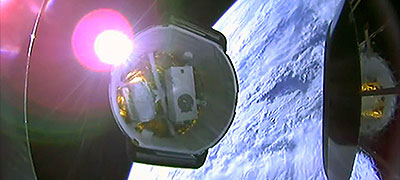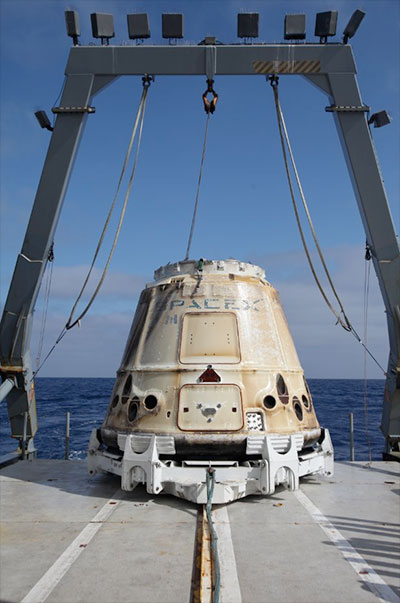 Space News space history and artifacts articles Messages space history discussion forums Sightings worldwide astronaut appearances Resources selected space history documents |
If you have previously registered, but forgotten your password, click here.
Both the Falcon 9's first stage and Dragon spacecraft for the mission are flight-proven. The Falcon stage previously supported the TESS mission in April 2018 and Dragon launched on the CRS-9 mission in July 2016. SpaceX will not attempt to recover Falcon 9's first stage after launch. The CRS-15 Dragon will return to Earth with more than 4,000 pounds (1,800 kg) of cargo after spending one month at the space station. | ||||||||
| Robert Pearlman | SpaceX update SpaceX is targeting Friday, June 29, 2018 for an instantaneous launch of its fifteenth Commercial Resupply Services mission (CRS-15) at 5:42 a.m. EDT, or 9:42 UTC, from Space Launch Complex 40 (SLC-40) at Cape Canaveral Air Force Station, Florida. | |||||||
| Robert Pearlman | Successful launch and deploy of the CRS-15 Dragon, beginning its three-day rendezvous with the International Space Station. From SpaceX on Twitter: Dragon is on its way to the International Space Station. Capture by space station crew set for Monday morning.  | |||||||
| Robert Pearlman | NASA release New NASA Research, Hardware Heading to Space Station on 15th SpaceX Resupply Mission | |||||||
| Robert Pearlman | Dragon captured, installed on space station | |||||||
| Robert Pearlman | NASA update Robotic flight controllers released the SpaceX Dragon cargo spacecraft from the International Space Station's robotic arm at 12:38 p.m. EDT (1638 GMT) on Friday (Aug. 3).SpaceX update (via Twitter): Dragon returned home after its second month-long stay at the space station. It's now headed to port for a cargo handover to NASA.  | |||||||
